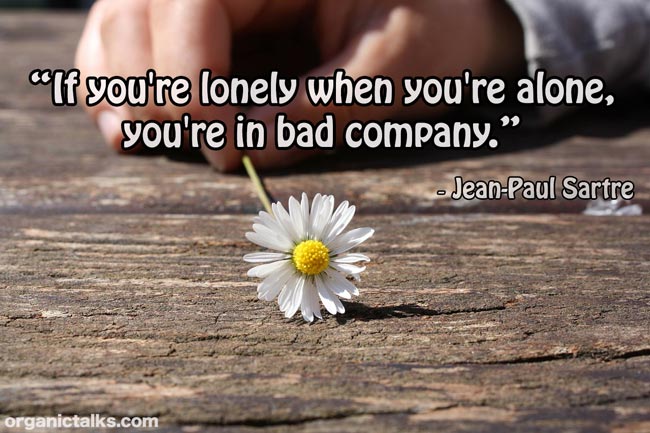The Practice of Solitude
By Paul Kowalewski
Photo: Pixabay
The Practice of Solitude
by Paul Kowalewski
My wife is away at a conference, and so I will be home alone for the next few days. It all gives me a chance to reflect on being alone, being lonely, and the difference between the two.
I know many people who go into a panic at the prospect of being alone. If they come home and the house is empty, the very first thing they do is turn on the TV set, put on some music, or more likely, rush to the computer to go online – connecting with Facebook friends, “twittering” and “googling.”
They go to their phones, calls and texts – doing almost anything they can to get connected, anything to fill up the empty space of being alone.
The thing is that all this supposed connection can still leave a person feeling pretty lonely. In fact, you can even be in the presence of other people – in a home or an office or a school or a restaurant, even in a church full of people, and you can still feel pretty darn lonely.
Over the years, my Buddhist teachers have provided me with some insightful wisdom to help me understand the essential nature of loneliness: The concept of an isolated, separate, individual ego is an illusion, a myth. All being IS a complex web of interrelationship. There are no different others.
So, when a person lives within the walls of a self-created illusion of an ego, isolated from others, there will always be angst and agony. By our very nature, we human beings are relational and when we cut ourselves off from relationship, we suffer. This suffering is what loneliness is all about.
And so, you can be connected to millions of people online, carrying on multiple conversations in the social media, you can text and tweet until your fingers hurt, you can be surrounded by others at home or work and school all day long, but if your life is essentially narcissistic, you will always be a lonely person.
As I see it, there are plenty of lonely people in the world nowadays – sometimes the people who are the most popular are the loneliest.
I always find it interesting to read the journal writings and meditations of contemplatives, mystics, and hermits in the various religious traditions – people who have withdrawn to monastic cells or live in desert caves totally alone. Paradoxically, I often get the sense that there is not much loneliness in their lives.
Thomas Merton was a Christian monk who spent a good portion of his life alone in a little hermitage located in the hills above the Kentucky monastery where his fellow monks lived. Deeply influenced by Buddhist teachings, Merton would often write about his time alone in his hermitage as a time when he felt most loved – profoundly connected to others, to the natural world, to “God.”
In fact, Merton found that the deeper he went “within,” the more he felt himself being pulled out – pulled out of the false “ego” self and into his true “relational” self. He lived alone in his hermitage but he almost never felt lonely.
Author and spiritual director, Henri Nouwen would often prescribe a seemingly paradoxical path for people who came to him suffering from loneliness. He would suggest that they develop a “practice of solitude.”
He would regularly advise those seeking his counsel to devote some deliberate time to being alone, and to learn how to be alone without being isolated – this is what it means to “practice solitude.”
Solitude is a time of regular silence, alone, away from others. In solitude, one is intentionally mindful, aware, with an uncluttered mind, and an open-heart, paying attention in the present.
In genuine solitude you don’t feel loneliness because, in genuine solitude, you become aware of the truth that there is no isolated self, there are no different others, everything and everyone belong to one another – the many are part of the Whole.
Interestingly enough, although it sounds somewhat paradoxical, the practice of solitude may be “just the ticket” for all the lonely people in the world nowadays.
My wife is away, and I am alone for these first few days of days of Holy Week (actually my dogs are here with me). I welcome this time as a sacred occasion for practicing solitude. I’m alone, but I’m not lonely.
The 4th century desert monastics were fond of telling one another:
Go sit in your cell and your cell will teach you everything.
I’ll be sitting in my cell over the next few days.
Please visit Paul’s blog The Desert Retreat House for more articles, and check out his book on Amazon: http://amzn.to/18IipCI
Let us know what you think by leaving a comment below, and don’t forget to follow us on Google+, Twitter, via RSS feed, or by simply subscribing to our newsletter at the end of this page!
organictalks.com



